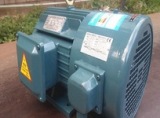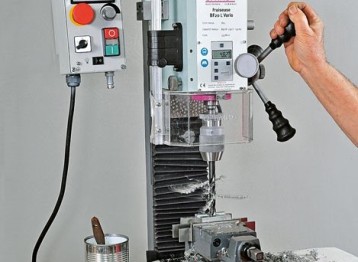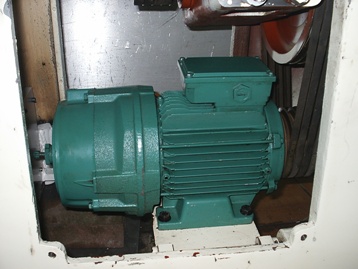Selection of electrical equipment according to technical characteristics
 Electrical equipment is selected by design organizations. When developing a project, they are guided by the average working conditions. Actual factors affecting equipment may vary widely. For a design organization, for example, it is difficult to take into account what specific voltage deviations in electrical receivers will be in each individual case. in real conditions. In a number of cases, the operation modes of electricity consumers do not correspond to the design ones.
Electrical equipment is selected by design organizations. When developing a project, they are guided by the average working conditions. Actual factors affecting equipment may vary widely. For a design organization, for example, it is difficult to take into account what specific voltage deviations in electrical receivers will be in each individual case. in real conditions. In a number of cases, the operation modes of electricity consumers do not correspond to the design ones.
In the practice of operation, two groups of tasks related to the selection of electrical equipment usually arise — checking the compliance of the selected electrical equipment with real operating conditions and performing the correct replacement of damaged products. These questions are especially relevant for responsible consumers, for whom the irrational use of electrical equipment causes significant damage.
The essence of the choice comes down to evaluating a number of indicators characterizing the specific working conditions and comparing them with the parameters of the electrical equipment. In this case, either the constraint principle or the optimality principle is used.
In the first case, the indicators of the electrical equipment should not exceed the specified tolerances, for example, the actual power of the load should not exceed the power of the electric motor. In the second case, an optimization problem is formed, which is solved by one of the known methods.
The selection of equipment according to the technical characteristics includes an assessment of its compliance with the environmental conditions and the intended modes of operation (power, current, voltage).

Selection of electrical equipment for environmental conditions
Environmental selection should exclude the use of electrical receivers in conditions for which they are not designed.
Electrical products produced by the industry may have the following climatic characteristics: U — with a temperate climate, HL — with a cold climate, TV — with a humid tropical climate, T — with a dry tropical climate, O — general climatic characteristics.
Accommodation categories are defined as follows:
1 — for outdoor work;
2 — for work in rooms with the same temperature as outdoors;
3 — for work in closed unheated rooms;
4 — for work in rooms with artificially controlled climate;
5 — for work in rooms with high humidity.
For the use of electrical equipment in special conditions, products of agricultural design (C) and chemical resistant characteristics are produced.
When checking newly installed or replacing out-of-service electrical equipment with a spare, you should pay attention to its compliance with the environmental conditions at the installation site.
The climatic version and the installation category are indicated on the plate after all designations related to the product modification (in the form of letters and numbers). For example, the electric motor 4A160M2 in the U version (for a temperate climate), location category 3 (work in closed rooms with natural ventilation) has the designation 4A160M2UZ, and with a specialized agricultural version - 4A160M2SUZ.

In addition to selection by climatic design and placement category, the electrical equipment must also be checked by degree of protection… The letters IP are used to indicate the degree of protection followed by two digits.
The first indicates the degree of protection of personnel from contact with moving or live parts, as well as from the penetration of solid objects, the second — the degree of protection against moisture. If there is no need for one of the types of protection, then the missing digit in the designation is replaced by X.
Electric motors for general use are produced in two versions according to the degree of protection — IP44 — closed blown and IP23 — protected.
The rest of the electrical equipment used in industry and agriculture must have the preferred degrees of protection IP30, IP41, IP44, IP54, IP55.
The choice of degree of protection is made depending on the specific operating conditions of the electrical equipment, that is, in specific rooms. Typically, the degree of protection feature is placed on product boxes or on rating data plates.

Selection of electrical equipment by mode of operation
In addition to protecting electrical equipment from environmental factors, the choice of power or current is of great importance for its reliable and economical operation. The underestimated power of the electric motor reduces the performance of the drive mechanism, creates conditions for its premature failure. Using an overdriven electric motor increases the cost of the installation.
The power of the electric motor must be equal to the power required to drive the driven machine. The nature of the work machine load is critical. In case of long-term constant load, the choice of the electric motor is made according to the actual energy consumption. For a load that changes little over time, with a coefficient of variation of less than 20%, the load is selected according to the average power. With variable load — according to the calculated equivalent power (rms).
Knowing the calculated power of the driving machine, an electric motor is selected from the catalog that has the closest higher power value according to the condition Pl ≥ Pm
Read more about variable load motor selection: Selection of motors for cyclic action mechanisms
Electrical devices (magnetic starters, breakers, breakers) are selected according to the current of the main contacts Aznom1 ≥I slave, where Aznom1 is the rated current of the i-ro device, Iwork is the working current of the included circuit.
Electric heating installations are selected on the condition that their power is not less than the calculated one determined by the heat balance equation of the premises or the technological process.
In industry and agriculture, a voltage of 380/220 V is usually used, therefore all electrical receivers must be selected for this voltage.
See also on this topic: Selection of the type of motor protection
